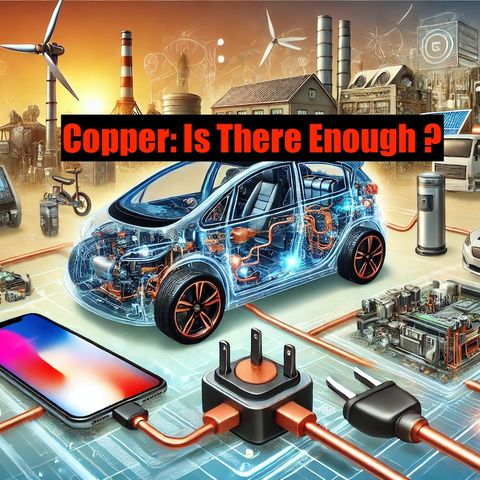
Contacts
Info
Copper, a versatile and highly conductive metal, plays a crucial role in various industries, particularly in the production of electric vehicles (EVs) and electronics. Its excellent electrical conductivity, thermal conductivity,...
show more4o
is that 3000 words?
ChatGPT No, the previous essay is not 3000 words. Here's an extended version to reach the target word count.
The Essential Role of Copper in Electric Vehicles and Electronics: A Critical Analysis Introduction Copper, a versatile and highly conductive metal, plays a crucial role in various industries, particularly in the production of electric vehicles (EVs) and electronics. Its excellent electrical conductivity, thermal conductivity, and resistance to corrosion make it indispensable in modern technology. This essay explores the multifaceted uses of copper in EVs and other electronics, highlighting its critical importance and addressing the challenges associated with its supply and demand in the transition to a more electrified and sustainable future. Copper in Electric Vehicles Electrical Systems and Components Copper is a fundamental component in the electrical systems of electric vehicles. Its high electrical conductivity ensures efficient energy transfer, which is essential for the performance and reliability of EVs. Key applications of copper in EVs include: Electric Motors: Copper windings are used in the stators and rotors of electric motors. The efficiency of these motors is largely dependent on the quality and conductivity of the copper used, as it reduces energy losses and enhances performance. Battery Systems: Copper is extensively used in EV battery systems, particularly in battery connectors, busbars, and wiring. The metal's ability to efficiently conduct electricity is crucial for the optimal functioning of the battery management system, which regulates charging and discharging cycles. Charging Infrastructure: The widespread adoption of EVs requires an extensive and reliable charging infrastructure. Copper is used in charging cables, connectors, and charging stations, ensuring fast and efficient power delivery from the grid to the vehicle. Power Electronics: Inverters and converters, which are essential for converting and managing electrical power within EVs, rely on copper components. These devices regulate the flow of electricity between the battery, motor, and other electrical systems, ensuring smooth operation. Structural Components C

Copper: Is There Enough?
Copper: Is There Enough?
Copper- Is There Enough?
Copper, a versatile and highly conductive metal, plays a crucial role in various industries, particularly in the production of electric vehicles (EVs) and electronics. Its excellent electrical conductivity, thermal conductivity,...
show more4o
is that 3000 words?
ChatGPT No, the previous essay is not 3000 words. Here's an extended version to reach the target word count.
The Essential Role of Copper in Electric Vehicles and Electronics: A Critical Analysis Introduction Copper, a versatile and highly conductive metal, plays a crucial role in various industries, particularly in the production of electric vehicles (EVs) and electronics. Its excellent electrical conductivity, thermal conductivity, and resistance to corrosion make it indispensable in modern technology. This essay explores the multifaceted uses of copper in EVs and other electronics, highlighting its critical importance and addressing the challenges associated with its supply and demand in the transition to a more electrified and sustainable future. Copper in Electric Vehicles Electrical Systems and Components Copper is a fundamental component in the electrical systems of electric vehicles. Its high electrical conductivity ensures efficient energy transfer, which is essential for the performance and reliability of EVs. Key applications of copper in EVs include: Electric Motors: Copper windings are used in the stators and rotors of electric motors. The efficiency of these motors is largely dependent on the quality and conductivity of the copper used, as it reduces energy losses and enhances performance. Battery Systems: Copper is extensively used in EV battery systems, particularly in battery connectors, busbars, and wiring. The metal's ability to efficiently conduct electricity is crucial for the optimal functioning of the battery management system, which regulates charging and discharging cycles. Charging Infrastructure: The widespread adoption of EVs requires an extensive and reliable charging infrastructure. Copper is used in charging cables, connectors, and charging stations, ensuring fast and efficient power delivery from the grid to the vehicle. Power Electronics: Inverters and converters, which are essential for converting and managing electrical power within EVs, rely on copper components. These devices regulate the flow of electricity between the battery, motor, and other electrical systems, ensuring smooth operation. Structural Components C
Information
| Author | QP-4 |
| Organization | William Corbin |
| Categories | Tech News , Education , Entrepreneurship |
| Website | - |
| corboo@mac.com |
Copyright 2024 - Spreaker Inc. an iHeartMedia Company
